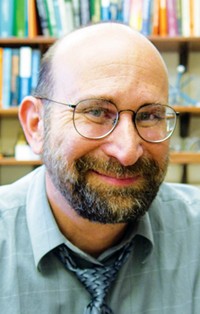Advertisement
Grab your lab coat. Let's get started
Welcome!
Welcome!
Create an account below to get 6 C&EN articles per month, receive newsletters and more - all free.
It seems this is your first time logging in online. Please enter the following information to continue.
As an ACS member you automatically get access to this site. All we need is few more details to create your reading experience.
Not you? Sign in with a different account.
Not you? Sign in with a different account.
ERROR 1
ERROR 1
ERROR 2
ERROR 2
ERROR 2
ERROR 2
ERROR 2
Password and Confirm password must match.
If you have an ACS member number, please enter it here so we can link this account to your membership. (optional)
ERROR 2
ACS values your privacy. By submitting your information, you are gaining access to C&EN and subscribing to our weekly newsletter. We use the information you provide to make your reading experience better, and we will never sell your data to third party members.
Materials
ACS Award In Industrial Chemistry
Recipients are honored for contributions of major significance to chemistry
by Jeff Johnson
February 16, 2009
| A version of this story appeared in
Volume 87, Issue 7
Sponsored by the ACS Division of Business Development & Management and the Synthetic Organic Chemical Manufacturers Association
Diversity is what George G. I. Moore likes best about his career in chemistry. "What I am happiest about is that my synthetic organic skills have allowed me to contribute to many different areas—from pharmaceuticals to fluids to monomers, polymers, and thin films," he says.
Moore, 67, is proudest of his work on anti-inflammatory agents that led to the discovery of nimesulide and to an anti-inflammatory-antioxidant hypothesis. His research at 3M in industrial chemistry has contributed to the development of a wide range of products and potential products—from artificial blood substitutes to fluorinated surfactants and hard coatings containing fluorochemical materials for better cleanability.
"Not all industrial research leads to successful products," Moore notes. "Technical success is only the first step. Market needs, economics, regulations, and timing determine business success."
Moore is a prolific inventor and is the first 3M researcher to receive 100 U.S. patents; he currently holds 130. Moore was elected to the 3M Carlton Society in 1991, the highest honor for 3M scientists.
He credits 3M for creating an especially favorable environment for industrial research. "My success was enabled by the breadth of 3M technologies and 3M's unique culture, with its emphasis on individual initiative and collaborations between technologies."
All his research has been done at 3M in St. Paul, Minn., where he was first hired more than 40 years ago. He is now semiretired and works part-time for 3M, as does his wife, Cheryl, who is also a 3M research chemist and a 3M Carlton Society member.
Moore joined the Biochemical Research Group of 3M's Central Research Lab in June 1965 as a synthetic organic chemist and supported a fledgling agrochemical and pharmaceutical exploration of 3M's fluorinated intermediates.
"We had considerable success in both areas," he says. An agrochemical division was formed, he adds, based on his synthesis of the plant-growth regulators Sustar and Destun.
Moore's research in structure-property relationships in the anti-inflammatory area led to his invention of nimesulide, a nonsteroidal anti-inflammatory drug with analgesic and antipyretic properties. Nimesulide was found to have high potency but unusually low toxicity, which is now ascribed to COX II inhibition. Nimesulide was licensed to Helsinn, which developed it into one of the world's most prescribed anti-inflammatory agents. It has been prescribed to more than 480 million patients in 50 countries since its introduction in 1985.
Moore believed nimesulide works as a free-radical scavenger and found evidence for this in the anti-inflammatory activity of a broad series of synthetic antioxidants that resulted in clinical trials of a hindered phenol as a topical anti-inflammatory agent.
In 1981, 3M exited this arena, and Moore joined 3M's fluoromaterials research effort. His focus was on new perfluorinated fluids and intermediates, which shifted in the 1990s to environmentally acceptable materials. These materials contributed to 3M's highly fluorinated ether fluids and its Scotchgard polymeric coatings.
Moore became a corporate scientist in 3M's Corporate Materials Research Lab in 1989 but supported other programs in different 3M divisions, including R&D programs in fluorochemicals and hydrocarbons with an emphasis on polymers and coatings.
The Moores enjoy gardening, art, fitness, and home-based problem-solving, he says, which includes their Airedale terrier, Sherlock. Moore's research areas now emphasize fluorochemical coatings and surfactants made from environmentally acceptable fluorochemicals.
Moore received a bachelor's degree with honors in chemistry from Cornell University in 1962 and a doctorate in organofluorine chemistry from the University of Colorado three years later.
Moore will present the award address before the Division of Business Development & Management.






Join the conversation
Contact the reporter
Submit a Letter to the Editor for publication
Engage with us on Twitter